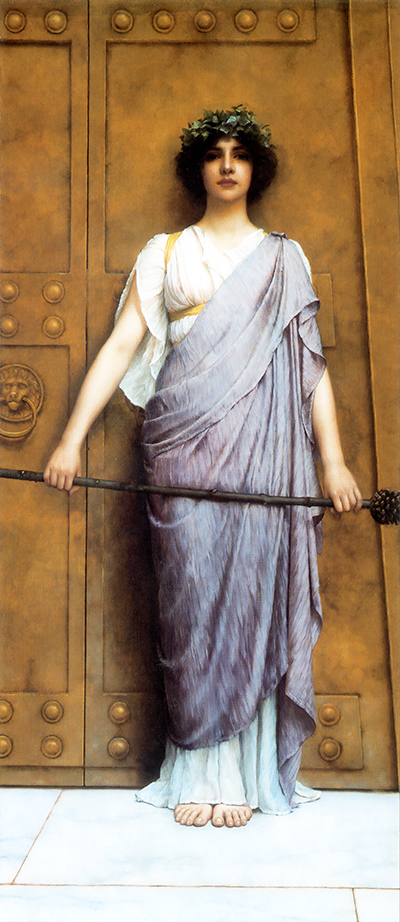John William Godward lived a life as a painter, and he faced many challenges in his work. Although he was a shy person, he expressed himself through his artwork. Learn more in this extensive biography of his life.
John William Godward was born on 9th August 1861 in Wilton Grove Wimbledon. He was the first born in a family of five kids. His father John Godward was an investment clerk in the Law Life Assurance Society in London. Growing up he developed a keen eye on art and was a protégé of Sir Lawrence Alma-Tadema. Although he was a talented painter, he felt that he could not compete with the likes of Picasso. At the age of 61, he took his own life and left a note saying that he felt like the world was not big enough for both him and Picasso.
His Life
John Godward was from a rich family who did not approve of him becoming an artist, and they were strongly against it. He still went ahead and became a follower of Sir Lawrence Alma-Tadema without his father's consent. This made his family to cut him off to the extent of them removing him in all family pictures. He was an art student at the royal academy, and this is where he showcased most of his art pieces.
He went to Italy in 1912 with one of his models, and this was the final blow with his family ties. When in Italy he faced many challenges about his art as people did not appreciate his style and they thought it was old fashioned. At this time Picasso's art style was becoming famous, and most people want art and paintings which were modern. John William painting style was more focused on paintings of women in silk clothes which was regarded as to Victorian and Neo-classicism which was coming to an end.
He returned to England in 1921 after having long and tiring career life in Italy. He committed suicide in 1922 by putting his head inside the oven; many people speculate that he suffered depression and this led to his death. He struggled with depression due to his artwork not being fully accepted in Italy and his family rejecting put a toll on him. He was buried in Brompton Cemetry in west London when he died his family burnt down all his papers, pictures and memoirs as they dimmed his act as a disgrace to the family. Most of his pictures were lost, and there is believed to be only one available portrait of him which can be traced. This has resulted in the life of a talented artist to be a mystery.
His Work
One of his best-known work is the Dolce far Niente which he painted in 1904. The painting shows a lady lying on the floor next to a fountain the painting was bought as part of Andrew Lloyd Webber collection in 1995. His artwork was more of a classical style constructed in marble to give it that unique character.
Most of his work is pictures of gorgeous ladies posing next to amazing landscape architecture like fountains, and flowers. He was able to capture each lady's beauty differently and show the emotions on their faces. His paintings could convey a story that is going on in each of the ladies faces which makes all his paintings stand out. He was a skilled artist, and all his paintings were a combination of flesh, contrasting texture, fur, marble and fabrics.
His love for classical paintings is associated with the period when he was born. Victorian classical paintings were a big deal in the 1860s, and this trend continued for three decades in England. This influenced John William at a young age to enjoy painting and to express his love using art. His style of art may have led others to mistakenly associate him as being Pre-Raphaelite due to the use of vibrant colours in his paintings. Although he mostly drew pictures of women he still had a few semi nudes and nudes’ portrait like the oeuvre.
Who Inspired Him?
His painting style was the Victorian Neo-classicism which was famous in the early 1860s in England. He was a student of Sir Lawrence Alma-Tadema who was his greatest inspiration and his mentor. This is where he learnt the art of incorporating landscape features in his paintings and the use of marble.




